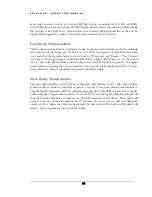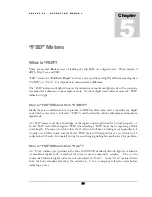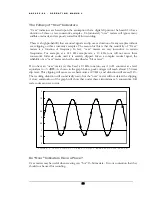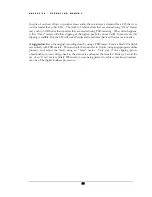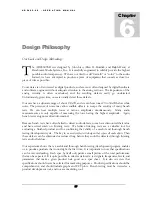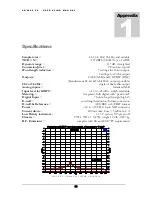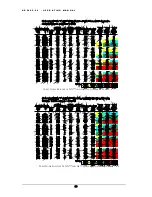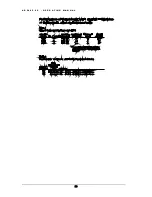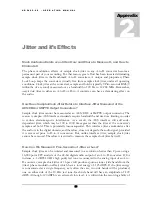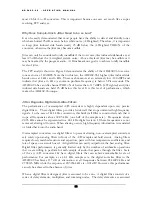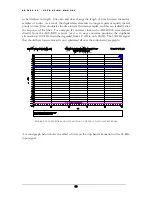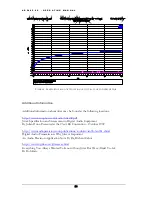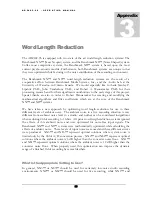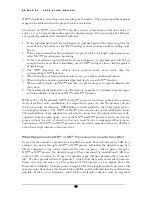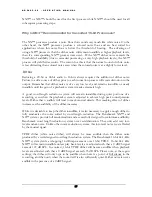
Chapter
4
A D 2 4 0 2 - 9 6 - O P E R A T I N G M A N U A L
Using the Meters
9-Segment LED Meters.
he AD2402-96 has a nine-segment LED meter for each audio channel. The meters are
fully digital and respond to both positive and negative going peaks. Thresholds are
determined by digital comparators, and therefore are exactly matched between channels.
Dual time constants extend the on time of each LED so that peaks as short at only one
sample can be displayed and measured accurately. The “FSD” clip indicator is accurate to one
quantization level.
T
Using the Peak Hold Function
Moving the meter control switch all the way up enables the peak hold function. This sets the
slow time constant to infinity. The highest peak will be held, all segments below the peak level
will be controlled by the fast (7.8 msec) decay time constant.
Selecting Meter Range
The AD2402-96 has two meter ranges; one with 6-dB steps, and one with 1-dB steps. The 6-dB
scale allows monitoring for signal presence, as well as coarse adjustment of levels. The 1-dB scale
allows highly accurate adjustment of digital levels. In addition, the bottom two steps of both
scales are expanded.
In either range, a light will not light until the appropriate threshold is reached. In other words,
the -1 dBFS light will remain off until a digital code equal to or exceeding - 1 dBFS is
encountered. Therefore, a signal at -1.01 dBFS will read -2 dBFS on the meter. This guarantees
that the step between -2 and -1 is the same size as the step between -1 and FSD.
Meter Time-Constants
The meters on the AD2402-96 have instantaneous peak response. In other words, the amplitude
of a single sample will read accurately on the meter. However, the response time of the human
22
















